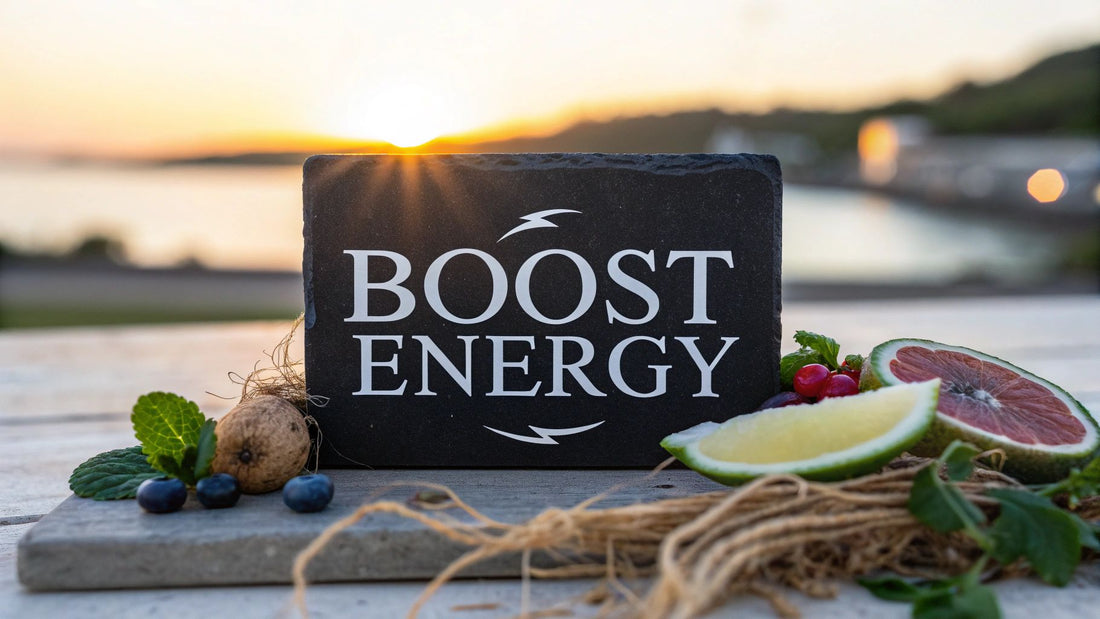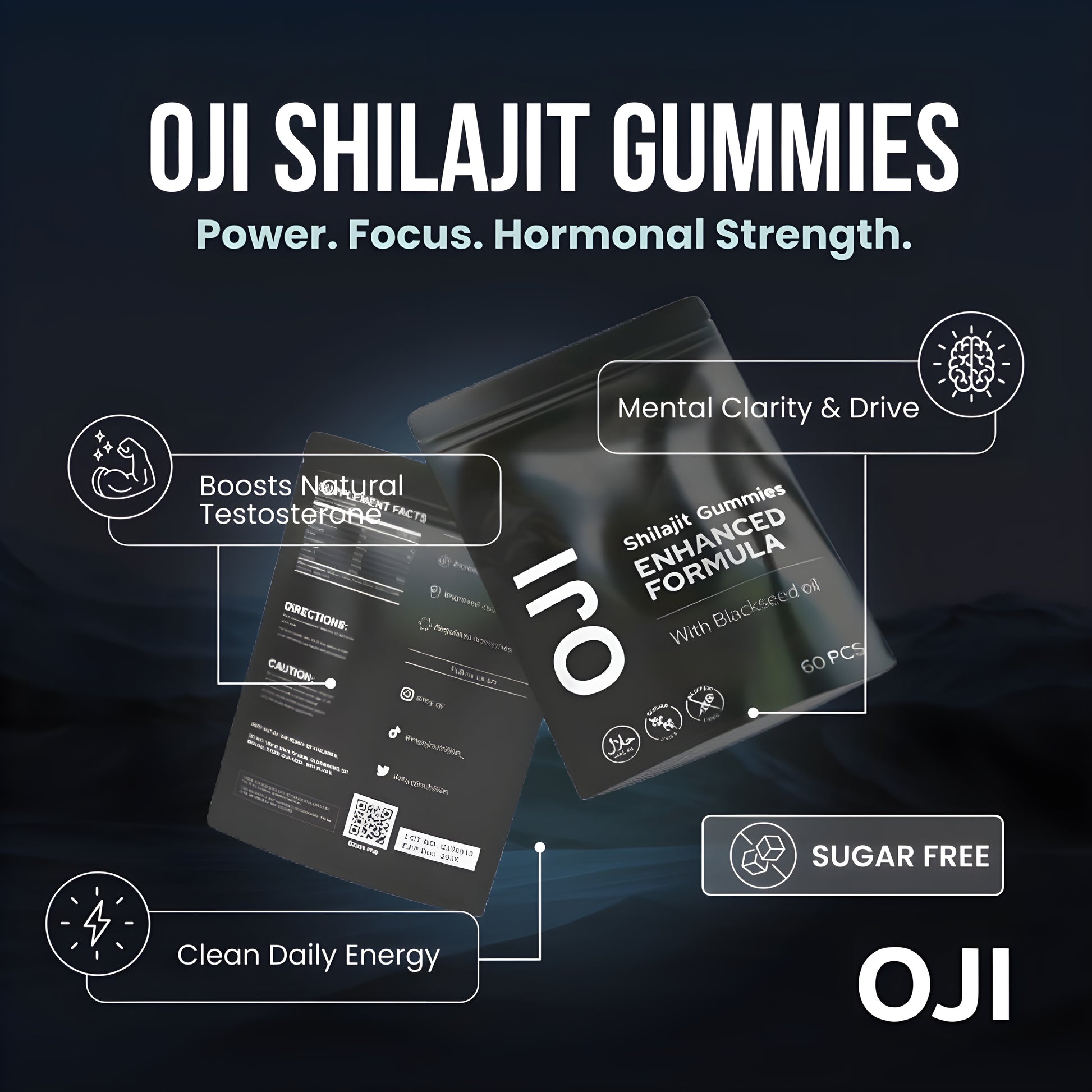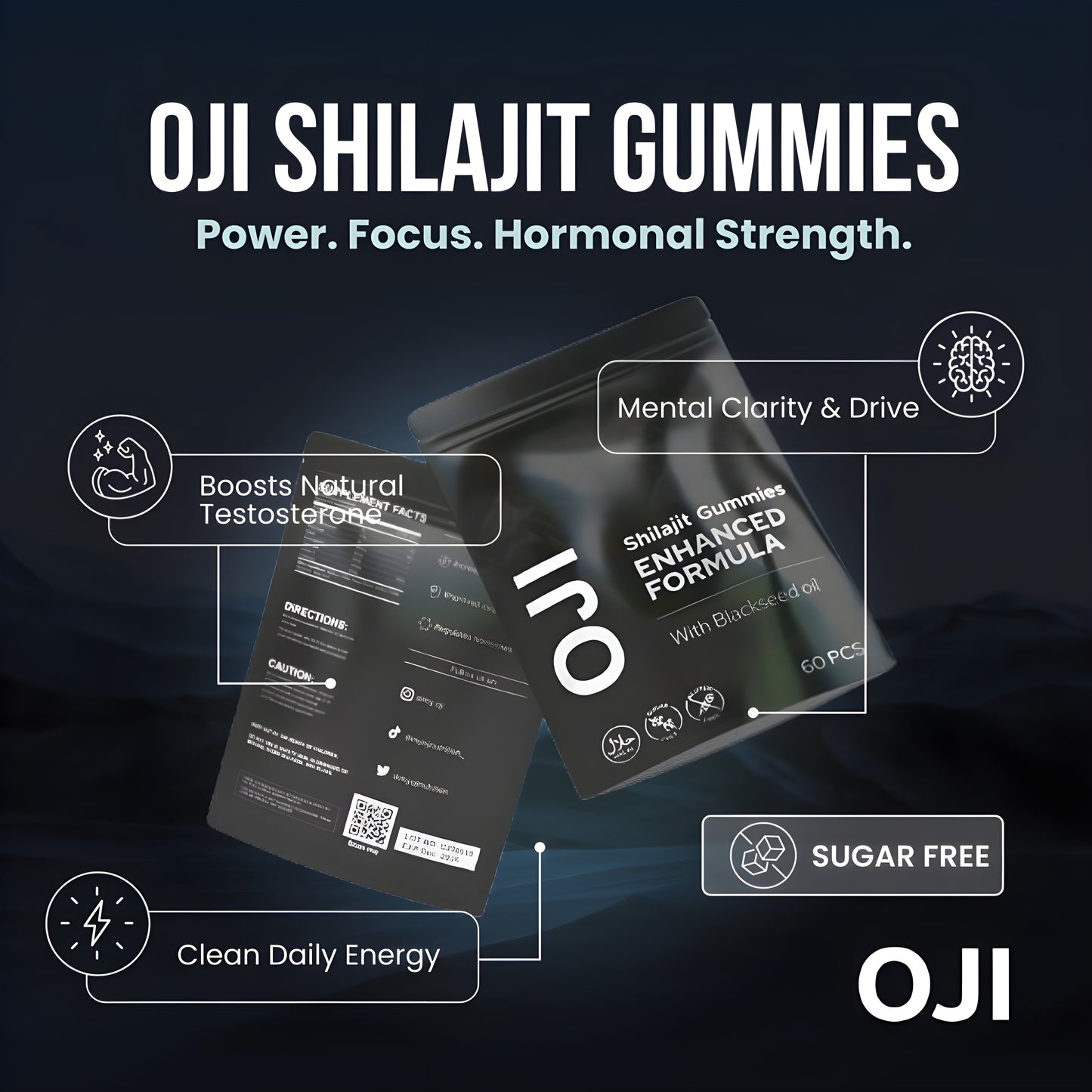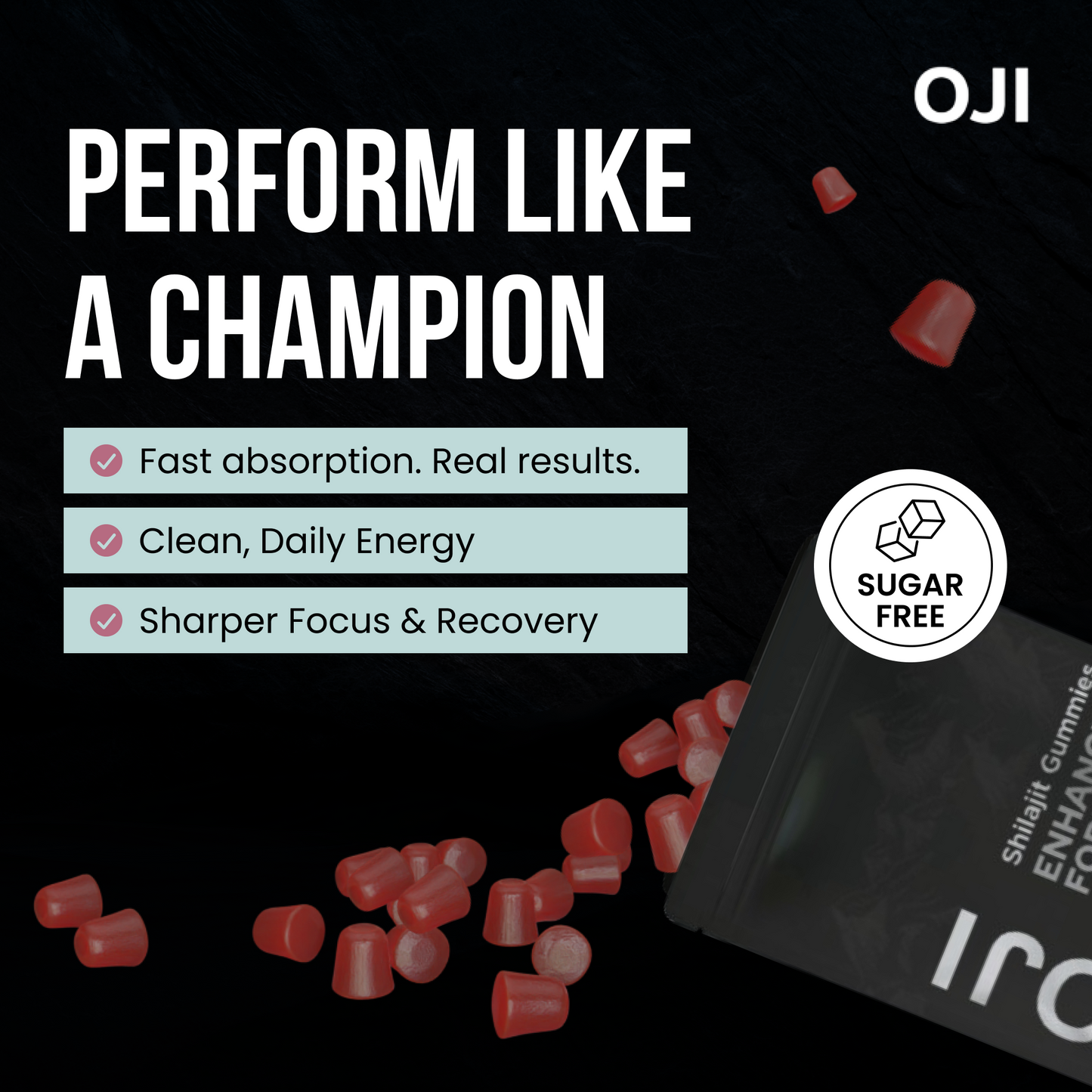In our fast-paced world, persistent fatigue can often feel like the standard state of being. Many of us reach for another cup of coffee or a sugary snack for a temporary lift, only to experience the inevitable crash later. But what if you could tap into a reservoir of sustainable energy, naturally? The feeling of vibrant, consistent vitality is not a myth; it's the direct result of specific, actionable daily habits that work in harmony with your body's biology.
This guide is designed to cut through the noise. It offers a curated list of nine powerful and scientifically-supported natural ways to boost energy. We move beyond generic advice like 'get more sleep' and instead provide practical, step-by-step strategies you can implement immediately to see a real difference. From optimising your circadian rhythm with sunlight to leveraging ancient adaptogenic minerals and managing stress effectively, each point is a tool for your wellness arsenal.
Prepare to transform your energy levels from the inside out. This isn't just about fighting off tiredness for a few hours. It's about building a robust foundation for lasting vitality, mental clarity, and physical stamina, allowing you to rediscover what it feels like to operate at your peak.
1. Quality Sleep Optimisation
Prioritising sleep is the single most effective strategy for sustained daily energy. It’s not just about the number of hours, but the quality of that rest. During deep sleep, your body performs essential maintenance: it clears metabolic waste from the brain, repairs tissues, produces crucial hormones, and recharges its cellular energy stores. Neglecting sleep directly impacts adenosine levels, the chemical that makes you feel drowsy, leading to a constant state of fatigue. This makes it a non-negotiable cornerstone of finding natural ways to boost energy.

Elite athletes follow strict sleep schedules to maximise performance, and companies like Google provide nap pods, acknowledging that high-quality rest dramatically improves cognitive function. You can apply the same principles to your life.
Action Steps for Quality Sleep
To transform your sleep, focus on optimising your environment and routine with these actionable steps:
- Set a Consistent Schedule: Go to bed and wake up at the same time every day, even on weekends. This action stabilises your body's internal clock, or circadian rhythm.
- Engineer a Sleep Sanctuary: Make your bedroom a cool, dark, and quiet haven. Set the temperature between 18-20°C. Install blackout curtains and use a white noise machine if necessary.
- Implement a Digital Sunset: Stop using all screens—phones, tablets, and computers—at least 60-90 minutes before bedtime. This prevents blue light from disrupting your melatonin production.
- Control Your Evening Intake: Avoid heavy meals, caffeine, and alcohol in the hours leading up to sleep, as they can interfere with your sleep quality.
2. Regular Physical Exercise
Consistent physical activity might seem counterintuitive when you feel tired, but it is one of the most reliable methods for generating more energy. Exercise boosts circulation and strengthens your cardiovascular system, allowing your body to deliver oxygen and nutrients to your tissues more efficiently. On a cellular level, it stimulates the creation of new mitochondria, the "powerhouses" within your cells responsible for energy production. This makes physical activity a powerful, self-sustaining cycle for vitality and one of the most effective natural ways to boost energy.

Corporate wellness programmes report increased employee productivity after introducing fitness initiatives, and studies on sedentary office workers show a significant reduction in fatigue once they begin a structured exercise routine. You can achieve the same results.
Action Steps for Regular Physical Exercise
To integrate movement into your life effectively, focus on consistency over intensity, especially when starting out. Use these actionable steps to build a sustainable habit:
- Meet the Weekly Goal: Aim for the NHS-recommended 150 minutes of moderate-intensity activity per week. Break this down into manageable 30-minute sessions five days a week.
- Diversify Your Workouts: Incorporate a blend of cardiovascular exercise (like brisk walking, cycling, or swimming) and strength training (using weights or bodyweight) to build both endurance and muscular stamina.
- Schedule Morning Movement: Exercising in the morning can boost endorphins and set an energetic tone for the entire day. A brisk walk or light jog can be more invigorating than a cup of coffee.
- Break Up Sitting Time: If you have a desk job, set a timer to get up and take a five-minute walking break every hour. This simple act prevents energy dips and improves circulation.
3. Proper Hydration
Maintaining optimal fluid balance is a foundational yet often overlooked pillar of energy production. Even mild dehydration, defined as a loss of just 1-2% of your body's water, can significantly impair cognitive function, mood, and physical stamina. Water is the medium for nearly every metabolic process, including the transport of nutrients into your cells and the removal of waste. When dehydrated, your blood volume decreases, forcing your heart to work harder to pump oxygen and nutrients through your system, which directly translates to feelings of fatigue and sluggishness.

Athletes follow precise hydration protocols to prevent performance decline. In professional settings, companies encourage constant hydration to maintain employee focus. The simple act of drinking enough water is one of the most effective natural ways to boost energy throughout the day.
Action Steps for Proper Hydration
To effectively manage your hydration levels and unlock consistent energy, integrate these straightforward habits into your daily life:
- Start Your Day with Water: Begin your morning by drinking a large glass of water (around 500-600ml) to rehydrate after sleeping. This action kick-starts your metabolism and brain function.
- Use Regular Reminders: Carry a marked water bottle or set alerts on your phone to prompt you to drink consistently, rather than waiting until you feel thirsty.
- Perform a Colour Check: A simple yet effective gauge of hydration is the colour of your urine. Aim for a pale, straw-like colour. Darker yellow is a clear sign you need to drink more fluids.
- Infuse for Flavour: If you find plain water unappealing, add slices of lemon, cucumber, mint, or berries. This enhances flavour without adding sugar or artificial ingredients.
By proactively managing your fluid intake, you support your body’s core functions for sustained energy. You can discover more non-stimulant energy strategies by exploring the top 7 non-caffeine energy boosters.
4. Balanced Nutrition and Steady Blood Sugar
Your diet is the direct fuel source for your body's energy production. Consuming nutrient-dense whole foods provides the necessary vitamins and minerals for cellular function, while maintaining stable blood glucose levels prevents the dramatic energy spikes and crashes caused by refined sugars and processed carbohydrates. A balanced approach ensures a slow, steady release of energy throughout the day, eliminating mid-afternoon slumps and supporting consistent mental clarity. This makes nutrition a critical pillar in any strategy for natural ways to boost energy.

Diets like the Mediterranean diet are consistently linked to higher energy levels. Athletic nutrition protocols are built around precise meal timing and macronutrient balance to sustain peak performance. Adopting these concepts can transform your daily energy landscape.
Action Steps for Balanced Nutrition
To harness food for sustained energy, focus on consistency and quality with these actionable steps:
- Eat Regular, Balanced Meals: Plan to eat every 3-4 hours to keep your blood sugar stable. Ensure each meal contains a combination of lean protein, healthy fats, and complex carbohydrates.
- Switch to Complex Carbohydrates: Swap white bread, pasta, and sugary snacks for wholegrains like oats, quinoa, brown rice, and sweet potatoes. These release glucose slowly for lasting fuel.
- Never Skip Breakfast: Start your day with a protein-rich meal to kick-start your metabolism and set a stable energy baseline.
- Stock Healthy Snacks: Keep energy-boosting snacks like nuts, seeds, Greek yoghurt, or fruit readily available to avoid reaching for sugary, low-nutrient options when hunger strikes.
5. Natural Sunlight Exposure
Harnessing natural sunlight is a powerful, yet often overlooked, strategy for regulating your internal energy systems. Exposure to sunlight, particularly in the morning, acts as the primary signal for your body's circadian rhythm, the internal 24-hour clock that governs your sleep-wake cycle. This light exposure triggers the suppression of melatonin (the sleep hormone) and kickstarts the production of cortisol and serotonin, enhancing alertness, mood, and focus. Failing to get this natural light cue can leave your internal clock misaligned, contributing to daytime grogginess and one of the simplest natural ways to boost energy.
In Scandinavian countries, light therapy is a common practice to combat low energy during dark winters. Neuroscientists like Dr. Andrew Huberman have popularised the protocol of morning sunlight viewing to anchor the body's clock, significantly improving energy levels.
Action Steps for Natural Sunlight Exposure
To effectively use sunlight to boost your energy, integrate these straightforward habits into your daily routine:
- Get Morning Light: Aim for 10-20 minutes of direct sunlight exposure within the first hour of waking. Do this without sunglasses to allow the light to enter your eyes and signal your brain.
- Take Your Breaks Outdoors: Instead of eating lunch at your desk, take it outside. Even on an overcast day, the intensity of outdoor light is far greater than indoor lighting.
- Optimise Your Workspace: Position your desk near an east-facing window if possible to capture the morning sun. Keep curtains and blinds open throughout the day to maximise ambient light.
- Use a Light Therapy Lamp in Winter: During months with limited sunlight, use a light therapy lamp (or SAD lamp) to simulate natural daylight and help maintain your circadian rhythm and energy levels.
6. Stress Management and Relaxation
Chronic stress is a significant drain on your energy reserves. It keeps your body in a constant state of high alert, primarily through the overproduction of cortisol. This prolonged activation of the sympathetic nervous system, or "fight-or-flight" response, depletes your cellular energy, leading to exhaustion, mental fog, and burnout. Actively managing stress is therefore not a luxury but a fundamental component of finding natural ways to boost energy.
Hospitals implement stress-reduction protocols to improve patient recovery and prevent staff burnout. Elite military units incorporate resilience training and mindfulness to maintain peak performance under extreme duress. These examples prove that conscious relaxation directly translates to sustained energy.
Action Steps for Stress Management
Integrating stress management into your daily life requires consistent practice. Focus on these actionable techniques to calm your nervous system and restore your vitality:
- Schedule Daily Mindfulness: Dedicate 10-15 minutes each day to a mindfulness or meditation practice. Use apps like Headspace or Calm for guided sessions to help build this habit.
- Practice Tactical Breathing: When you feel stress rising, use the "box breathing" technique: inhale for four seconds, hold for four, exhale for four, and hold for four. Repeat this cycle several times to reset your nervous system.
- Take Intentional Breaks: Step away from your work or demanding tasks for short, frequent breaks. A five-minute walk or simply looking out of a window can prevent mental fatigue from setting in.
- Set and Enforce Boundaries: Learn to say "no" to commitments that overextend your capacity. Protecting your time and energy is a crucial action for preventing chronic stress.
7. Strategic Power Napping
Embracing a short, strategic nap is a powerful technique for recharging your mental and physical batteries mid-day. Unlike long naps that can leave you feeling groggy, a power nap of 10-20 minutes is designed to provide restorative benefits without entering the deeper stages of sleep. This practice helps to clear adenosine, the chemical compound that builds up in the brain and causes sleepiness, resulting in a significant boost in alertness, cognitive function, and mood. This makes it a highly effective and natural way to boost energy, particularly during the post-lunch slump.
A seminal NASA study on pilots found that a 26-minute nap improved performance by 34% and alertness by 54%. Companies like Google have installed nap pods, acknowledging that short rest periods lead to sharper, more productive employees. This mirrors the cultural tradition of the Spanish siesta, which has always valued a midday reset.
Action Steps for Strategic Power Napping
To master the art of the power nap and avoid post-sleep grogginess, timing and environment are crucial. Follow these actionable steps to integrate this practice effectively:
- Find the Right Time: The ideal window for a nap is between 1 pm and 3 pm, aligning with your body's natural dip in circadian rhythm. Napping after 4 pm can interfere with your nighttime sleep.
- Set a Strict Time Limit: Set an alarm for 20-30 minutes maximum. This prevents you from entering deep sleep, which is the primary cause of sleep inertia or that groggy feeling upon waking.
- Create a Restful Space: Find a quiet, dark, and comfortable place to lie down. Even resting your head on a desk in a quiet office corner can be effective if a dedicated space isn't available.
- Try a "Caffeine Nap": For an extra boost, drink a cup of coffee just before your 20-minute nap. The caffeine will take about 20-30 minutes to take effect, so you’ll wake up feeling the combined benefits of both the rest and the stimulant.
8. Caffeine from Natural Sources
Strategic consumption of caffeine from natural sources like coffee, green tea, or yerba mate can be a powerful tool for enhancing alertness and energy. Unlike synthetic caffeine found in many energy drinks, these natural sources contain a complex blend of antioxidants and other beneficial compounds, such as L-theanine in green tea, which helps moderate caffeine's effects. This synergy can provide a smoother, more sustained energy lift without the harsh peaks and crashes, making it one of the most effective natural ways to boost energy when used mindfully.
The global prevalence of coffee shop culture is a testament to caffeine's ability to enhance productivity. Traditional Japanese tea ceremonies centre on the consumption of matcha to foster a state of calm alertness. Athletes also frequently use black coffee as a pre-workout staple to improve performance.
Action Steps for Natural Caffeine
To use caffeine effectively without compromising your long-term energy, focus on mindful consumption and quality sources with these actionable steps:
- Implement a Caffeine Curfew: To protect sleep quality, avoid all caffeine after 2 PM. Its long half-life means that an afternoon coffee can disrupt your sleep architecture hours later.
- Know Your Dosage Limit: Keep your daily intake below 400mg, which is roughly equivalent to four cups of brewed coffee. This action helps prevent side effects like jitters and anxiety.
- Choose a Smarter Source: Opt for green tea or matcha. They contain L-theanine, an amino acid that promotes relaxation without drowsiness, leading to a smoother, more focused energy boost.
- Hydrate Simultaneously: Caffeine is a mild diuretic. Ensure you drink plenty of water throughout the day to counteract its dehydrating effects, which can otherwise lead to fatigue.
9. Cold Exposure Therapy
Briefly exposing your body to cold temperatures is a powerful method for an immediate and sustained energy increase. Cold exposure stimulates the sympathetic nervous system, prompting the release of norepinephrine, a hormone and neurotransmitter responsible for vigilance, focus, and mood. This physiological response acts as a natural reset button for your energy levels, enhancing alertness and metabolic function, making it an invigorating tool among natural ways to boost energy.
This practice is popularised by figures like Wim Hof and utilised by elite athletes who use ice baths to accelerate recovery. The long-standing Scandinavian tradition of ice swimming highlights its cultural significance as a method for building resilience and vitality, demonstrating its effectiveness across different contexts.
Action Steps for Cold Exposure
To safely introduce this practice and reap its benefits, start small and listen to your body with these actionable steps:
- Start with a Cold Shower Finish: End your regular warm shower with just 30 seconds of cold water. This is an accessible entry point to build tolerance.
- Extend the Duration Gradually: As you become more comfortable, extend the cold exposure time incrementally. Work your way up to two or three minutes over time.
- Focus on Your Breath: When the cold hits, your instinct will be to hold your breath. Instead, concentrate on slow, controlled exhales to calm your nervous system.
- Warm Up Naturally: After exposure, avoid jumping straight into a hot shower. Allow your body to warm itself up by drying off and putting on warm clothes. This action trains your body's thermoregulation capabilities.
Natural Energy Boost Methods Comparison
| Method | Implementation Complexity 🔄 | Resource Requirements ⚡ | Expected Outcomes 📊 | Ideal Use Cases 💡 | Key Advantages ⭐ |
|---|---|---|---|---|---|
| Quality Sleep Optimization | Medium – requires lifestyle changes and environment adjustments | Low – cost-free but needs time investment | High – improved cognitive & physical performance, hormone regulation | Anyone needing foundational energy restoration | Natural hormone balance, immune boost, cost-free |
| Regular Physical Exercise | Medium to High – requires consistent effort and time commitment | Moderate – time, space, possibly equipment | High – cardiovascular and stamina improvement, mood enhancement | Those aiming for sustained energy and fitness | Long-lasting energy, mood boost, cardiovascular health |
| Proper Hydration | Low – requires habit formation and consistent attention | Very Low – accessible and inexpensive | Medium – immediate energy and mental clarity improvement | All individuals, especially active or hot environments | Quick impact, affordable, supports all bodily functions |
| Balanced Nutrition and Steady Blood Sugar | Medium – needs meal planning and preparation | Moderate – can be time-consuming and potentially costly | High – prevents crashes, supports focus and mood stability | People with energy crashes or blood sugar issues | Sustained energy, mental focus, weight management |
| Natural Sunlight Exposure | Low – requires intentional outdoor time | None to Low – access to sunlight or light therapy devices | Medium to High – regulates circadian rhythm, mood, immune function | Those with circadian rhythm issues or mood dips | Free, natural hormone regulation, sleep quality improvement |
| Stress Management and Relaxation | Medium – requires learning techniques and regular practice | Low – time and often guided resources | High – reduces energy drain, improves focus and immunity | High-stress individuals needing energy restoration | Long-term health benefits, better sleep, mental clarity |
| Power Napping | Low – requires timing discipline and environment | Very Low – just a quiet space and time | Medium – quick alertness and cognitive performance boost | People needing short-term energy boost during day | Fast energy boost, scientifically proven, no equipment needed |
| Caffeine from Natural Sources | Low – requires mindful consumption | Low – widely available beverages | Medium – rapid alertness and antioxidant benefits | Those seeking quick energy without supplements | Quick boost, antioxidant effects, cultural integration |
| Cold Exposure Therapy | High – uncomfortable, requires gradual adaptation and caution | Low to Moderate – access to cold water or environment | Medium to High – rapid energy increase, stress resilience | Physically fit or adventurous users seeking metabolic benefits | Rapid energy and mood boost, builds mental toughness |
Your Next Step: Building a High-Energy Lifestyle
Navigating the path to sustained vitality can feel overwhelming, but as we've explored, the solution isn't a single, elusive secret. Instead, lasting energy is the cumulative result of small, consistent actions that honour your body's natural rhythms. By now, you've seen how foundational pillars like optimising sleep, staying hydrated, and managing stress are not just clichés but powerful, science-backed strategies. We've delved into practical methods for stabilising blood sugar through balanced nutrition and harnessing the invigorating power of natural sunlight and cold exposure.
These nine distinct yet interconnected habits form a holistic framework for reclaiming your energy. The true power lies not in attempting to master them all at once, but in recognising that each one contributes to a larger, synergistic effect. Think of it as building a resilient energy ecosystem. Your commitment to regular physical exercise enhances sleep quality, which in turn improves your ability to manage stress. Proper hydration supports every metabolic process, amplifying the benefits you receive from a nutrient-dense diet.
Turning Knowledge into Action: Your Personalised Energy Plan
The key takeaway is that you are in control. The most effective approach is to start small and build momentum. Perfection isn't the goal; consistent, mindful progress is.
To get started, consider this simple, actionable plan:
- Choose Your "One Thing": Review the nine strategies we've covered. Which one feels most achievable or appealing to you right now? Perhaps it's committing to a 15-minute walk after lunch to get both sunlight and movement. Maybe it's replacing your second afternoon coffee with a tall glass of cold water or a short, 20-minute power nap.
- Commit for One Week: Don't think about forever. Focus solely on integrating that single new habit into your daily routine for the next seven days. Track how you feel. Notice any subtle shifts in your afternoon energy levels, your mood, or your mental clarity. This creates a positive feedback loop that encourages further change.
- Layer and Build: Once your first habit feels more automatic, introduce a second. For instance, if you've mastered the post-lunch walk, you could then focus on your hydration, ensuring you drink a glass of water first thing every morning. By layering these small, manageable changes, you gradually construct a robust, high-energy lifestyle without feeling deprived or overwhelmed.
This methodical approach transforms the quest for more energy from a daunting overhaul into an empowering journey of self-improvement. By implementing these natural ways to boost energy, you are not just fighting fatigue; you are actively investing in your long-term health, enhancing your focus, and building resilience to face life's daily demands with renewed vigour.
Ready to provide your body with the foundational support it needs for optimal energy production? Discover how the potent blend of over 85 trace minerals and fulvic acid in Oji Shilajit can help replenish essential nutrients and enhance your cellular vitality. Visit the Oji Shilajit website to learn more and take a powerful step on your journey to sustained, natural energy.





